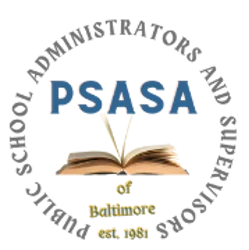
As school leaders reflect on the past academic year and prepare for the next, the landscape of student behavior and discipline remains a central and evolving concern. In today's dynamic educational environment, the decisions we make regarding these issues carry profound implications not only for our students, but also for our roles as educators and careers.
In an era defined by complex intersections of societal pressures, technological advancements and mental health challenges, our approach to managing student behavior demands continuous adaptation and careful deliberation. The strategies and policies we adopt must strike a delicate balance between compassion and accountability, creating an environment that supports students' academic growth and personal well-being.
In Newport News, Virginia, a former assistant principal of an elementary school where a tragic shooting involving a first-grade student occurred in January 2023 now faces eight counts of felony child abuse, as determined by a special grand jury. In the aftermath of this devastating event, the community seeks accountability, and allegations surrounding the case suggest that some blame for the incident has been directed toward the assistant principal.
This situation in Virginia underscores the blurred lines school leaders navigate in today's educational landscape. It serves as a stark reminder of the challenges and responsibilities inherent in maintaining safe and nurturing environments for our students while addressing complex disciplinary issues.
The New York Times reported in April on the story of a New Jersey principal who found himself in a risky situation when he intervened to stop a fight involving a teenage girl. Despite his good intention to defuse the altercation and ensure school safety, his actions placed him at risk of potential legal consequences, including prison, underscoring the precarious balance school leaders must maintain between intervention and potential liability.
The case stirred a racially diverse community, igniting heated debates with accusations leveled against the principal, while others staunchly defended him. Ultimately, the grand jury chose not to indict him.
While this outcome may pave the way for his potential return to his position, the damage to his reputation appears irreparable. As highlighted by The New York Times, the principal now finds himself in "professional limbo," and there remains the looming possibility of a civil lawsuit.
In today’s educational landscape, school leaders must navigate a complex web of state and local laws alongside intricate school district rules and regulations. Striking a delicate balance between necessary action and potential repercussions has become increasingly challenging, illustrating the nuanced "Catch-22" in which administrators operate—where they can face scrutiny whether they intervene or abstain. In short, some people want us to intervene, while others do not. In this heated political environment, our decisions now have a greater impact than ever before on fostering a communitywide response.
School leaders often grapple with bureaucratic complexity, making reasoned decision making fraught with potential pitfalls. They have limited discretion in disciplining students, yet bear full accountability for the outcomes.
Across many districts, traditional disciplinary measures like suspension, expulsion and detention are discouraged or prohibited. However, the disruptive impact of undisciplined behavior on classroom environments and overall student progress remains undeniable. Consequently, the practice of retaining students with disciplinary issues in their current classroom has become more common, sometimes at the expense of broader academic achievement.
These challenges underscore the difficulties school leaders face in managing instances of discipline, violence or conflict. While expected to uphold educational standards and ensure student safety, their interventions often can invite legal scrutiny and personal liability.
The line between appropriate intervention and legal jeopardy is often blurred. There is a pressing need for a comprehensive approach to addressing discipline and violence—one that prioritizes immediate safety concerns while considering the potential legal ramifications for those tasked with maintaining order.
At AFSA, we are actively addressing these issues. We have initiated internal discussions on how districts can better navigate these complexities and aim to develop sample contract language for collective bargaining agreements that clarify administrators' rights and ensure stronger due process protections. Your local union is committed to defending your due process rights.
AFSA provides crucial support through a professional liability insurance policy offering up to $2 million in coverage. This includes protection against civil actions stemming from various circumstances such as bodily injury, accusations of assault, personal injury claims and more.
Additionally, AFSA’s Legal Action Trust offers coverage for defense expenses related to constitutional rights, educational failures and criminal allegations stemming from school incidents. This support is crucial for protecting school leaders against legal challenges that may arise in the course of their duties.
The emergence of criminal charges against school leaders due to flawed policies is deeply troubling, contributing to a decline in trust and confidence in the education system. These challenges also discourage potential leaders from entering the profession, hindering efforts to nurture competent and ethical school administrators.
It is imperative that school systems address these systemic issues and implement reforms to support a positive trajectory for the profession. Systemic reforms are essential to creating an environment conducive to the success and well-being of every student, ensuring equitable opportunities for all to thrive academically while upholding the integrity of school leadership.

